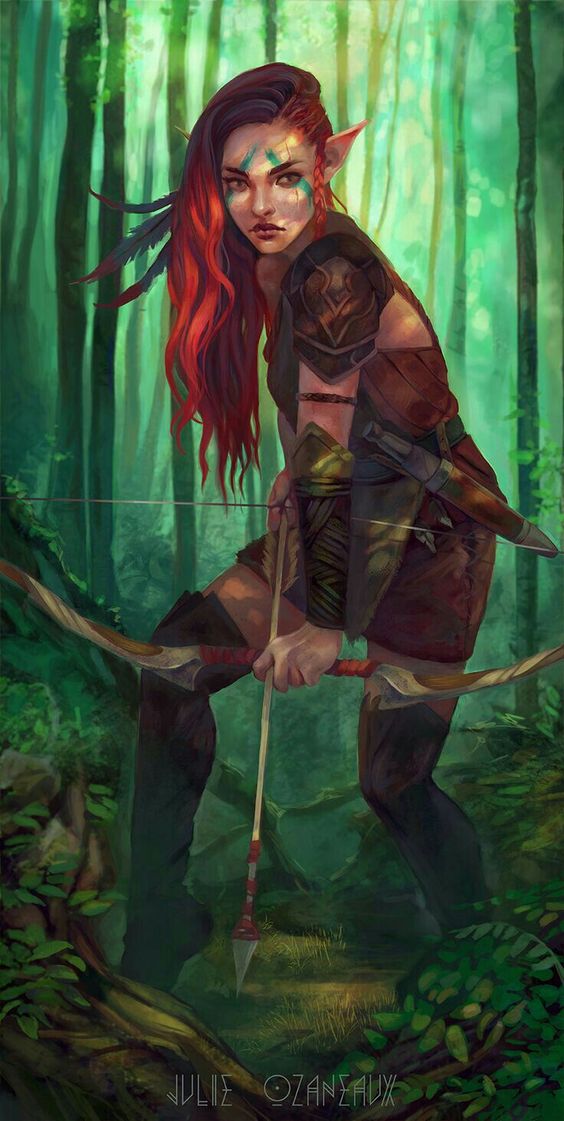Elves
When I first came into contact with the Elves, they seemed like a more tall and slender form of our species. Their movements seemed elloquent. Their manners and way of dressing stiff, yet beautiful. I expected much from the minds accompanied by such grace. Needless to say I was wildly dissapointed when their mouths started moving ever so gracious. I fear we gnomes truly are the most brilliant species in the galaxy...
Basic Information
Anatomy
Long, slender, thin bone structure. Long ears.
Genetics and Reproduction
Due to their long lifespan, reproduction is quite rare. Woman are able to conceive a child only on one week every 20 years between their 80th year and their 300th year. The mother is with child for one year, after which it is born. There are seldom difficulities at birth.
Important to note is that male elves are also able to procreate with humans. Their offspring are half-elves and cannot reproduce. Male human procreation with elves is as thusfar unheard of.
Ecology and Habitats
Most elves live in dense forests and are called Wood Elves. Some however live in other environments such as the Sand Elves, Snow Elves and Sea Elves. Since the invention of the Helm, Elves have been settling other planets and even moons too.
Dietary Needs and Habits
Most Elves are vegan and require little food. Their skin is able to transfer some of the warmth of the sun into energy. Their diet consists of various berries, fruits or fungi. Dark Elves or Drow have lost their ability to transfer energy from the sun and instead need to eat more than their surface brethern.
The Elves sustain themselves mainly by foraging, or in big communities where foraging would unbalance the ecosystem they run small agricultural operations.
Additional Information
Facial characteristics
Long ears, no facial hair. Their faces are very smooth and free of wrinkles for the first 300 years.
Geographic Origin and Distribution
Most Elves live on the
Average Intelligence
Mediocre, their natural (or societal?) interest in nature and magic leads to most of the Elves having atleast a basic education.
Perception and Sensory Capabilities
5 basic senses and nearly all of them have at least a heigthened magical sense.
Civilization and Culture
Major Organizations
Summer Court
Winter Court
Beauty Ideals
Themselves
Gender Ideals
A Queen should rule her court, for she bears fruit to all life.
Courtship Ideals
Usually the man courts the woman. Courting above your social status is unheard of.
Relationship Ideals
Looks first, cunning second.
Culture and Cultural Heritage
Respect for nature's balance is ingrained in Elven culture. This includes both life and death. The Elves see dying as a way to reunite with nature.
Common Taboos
The cannibal Elve tribes.
Historical Figures
Queen Titania
King Oberon
Queen Maeve
Common Myths and Legends
It is rumored that both courts are secretly plotting against each other despite their formal agreements.
Interspecies Relations and Assumptions
Either welcoming of other species as long as they respect nature.
Or very xenophobe, expecting the worst from other species.
Scientific Name
Dryadalis sapiens sapiens
Lifespan
700 to 800 years
Average Height
1.7 to 2.0 meters
Average Weight
35 to 60 kg
Average Physique
Flexible, long lived, hardly ever sick. But they aren't very strong.
Body Tint, Colouring and Marking
Skin colours can vary wildly from region to region.
Wood elves have a brownish hue
Sand elves have a bronze hue
Sea elves have a blue to green hue
Snow elves have a pure white skin
Drow have a dark black or purple tint
Remove these ads. Join the Worldbuilders Guild










Comments